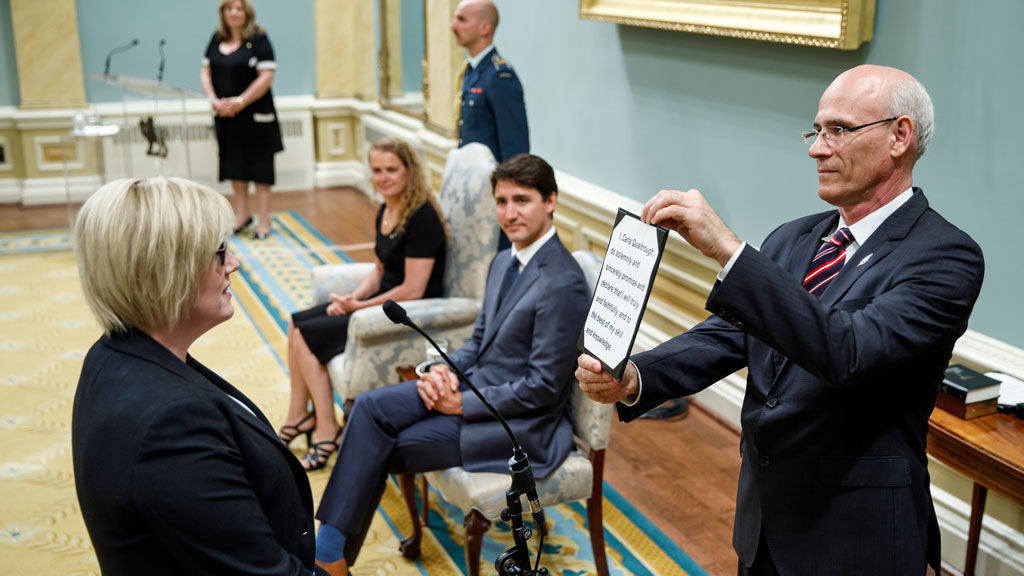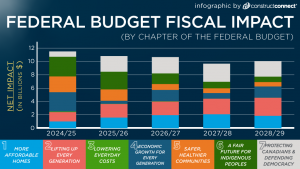Federal Employment Minister Carla Qualtrough offered a sneak peek at what the national budget may look like during the Canadian Construction Association’s (CCA) recent virtual conference.
“The speech from the throne hinted at the path forward,” said Qualtrough during a virtual conversation with CCA president Mary Van Buren. “It’s about creating one million jobs, the largest investment in training in history, getting underrepresented groups into employment and thinking outside the box.”
The cabinet minister explained investing in infrastructure will also be a cornerstone in the budget for recovery, but it will be tied to progressive societal goals.
“I would predict that you can expect a green and inclusive lens for these investments,” she said. “It will target projects that have broader social objectives. You will see the language of inclusion, fairness and nobody getting left behind.”
Qualtrough also reflected on the impact the pandemic has had on government thinking. Early on her top priority was getting money in the hands of workers, but she faced a system and process that was not set up to be agile.
“Nine million people relied on the Canadian Emergency Response Benefit (CERB),” said Qualtrough. “We knew that we could not fail but we did not have time to pilot or test anything, which usually takes two years. We had to take really big risks.”
Qualtrough noted this has shifted federal thinking on risk. She believes the success of the federal response shows that government could tolerate a lot more risk by moving and continuing to work closely with provincial and territory officials.
“Perhaps moving forward we could put partisan politics aside to keep delivering in this way,” she said.
Van Buren asked about the government’s thinking on attracting underrepresented groups to the trades.
Qualtrough said women, Indigenous people, people with disabilities and newcomers are a tremendous opportunity for construction.
“If there is one good think that could come out of the pandemic, maybe it is a more diverse and skilled workforce,” said Qualtrough. “Maybe accelerating efforts to address this challenge could be a legacy.”
Qualtrough said many of these labour pools remain largely untapped. In terms of approach, the minister said she is not a fan of quotas.
“If you remove barriers at the source, then everyone can have that shot,” she said. “Training and upskilling programs should upskill everyone. And when they come out of these programs they will have an equal shot at getting these jobs.”
She said some of these barriers are social or familial ones. She believes increasing the visibility of underrepresented groups in the trades could help encourage recruitment as well as supporting women who are trying to also raise children.
“Getting a more diverse pipeline from the beginning is key,” said Qualtrough. “It’s not enough to just post a job.”
She argued that government efforts also need to focus on helping employers be more inclusive.
“We can’t just leave employers and businesses to figure it out,” said Qualtrough. “We should invest in building employer confidence and changing culture. We should be in that space as well. Many want to hire more inclusively and we need to support them in that journey as well.”
When asked by Van Buren about training, Qualtrough said Canada has historically under-invested in it. She and the other employment ministers, who have been meeting more frequently since the pandemic began, have been looking at a more targeted approach.
“We are looking at training not just for training’s sake, but specific jobs, and what would be of benefit at a specific community level, how you can pivot workers and show what is available to them,” she said. “We are thinking outside the box, trying to be more responsible and nimble.”
Follow the author on Twitter @RussellReports.











Recent Comments
comments for this post are closed